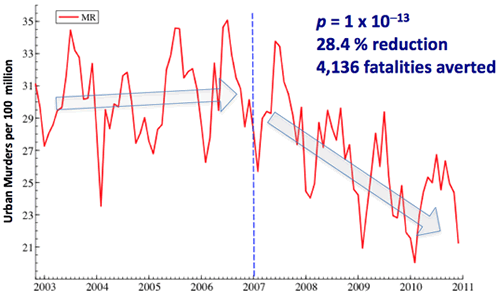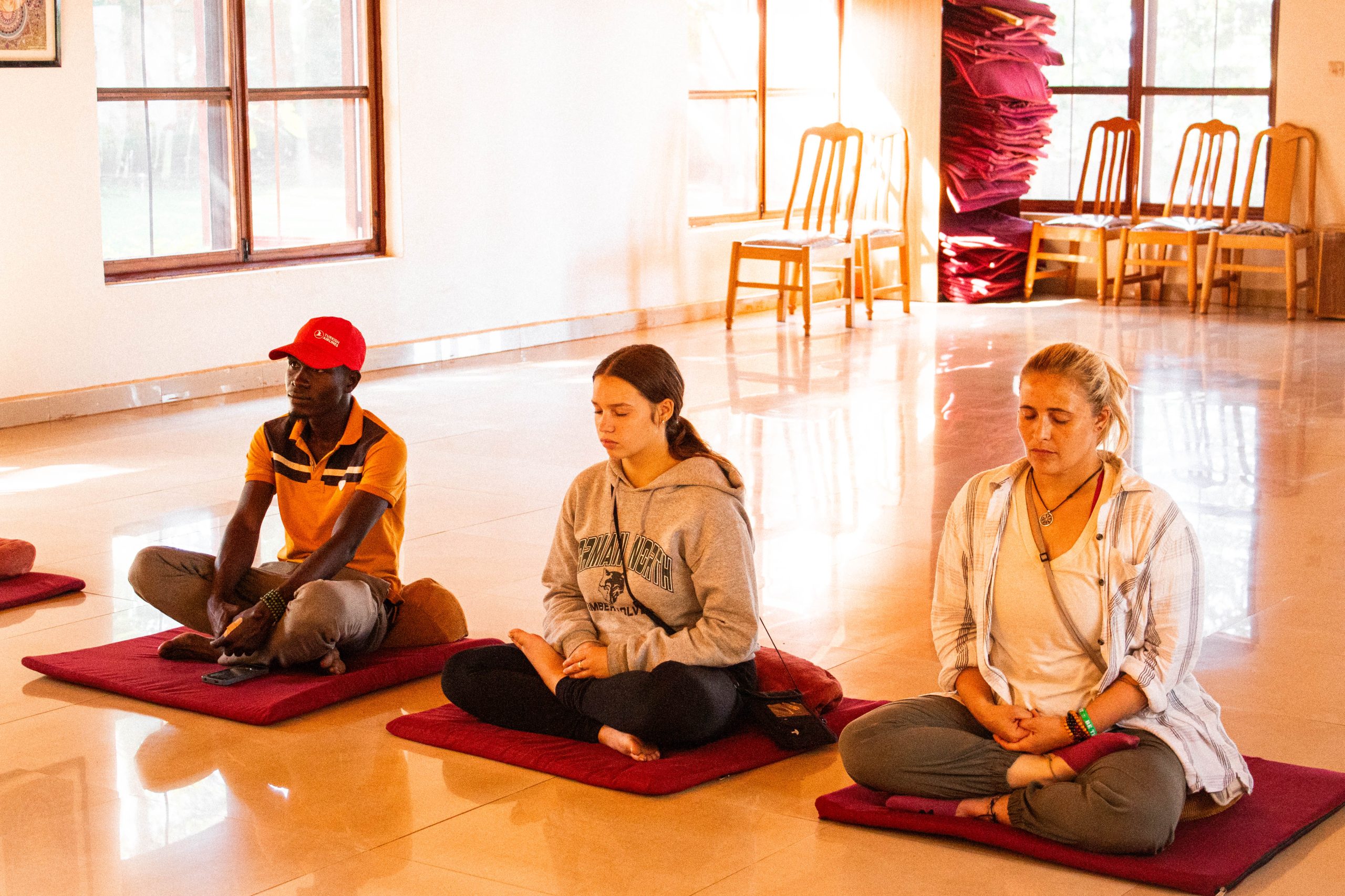I used to believe that change required action—big, loud, undeniable action. Sometimes, it still does. But what if the most profound change happens in stillness? I first questioned this while on a pilgrimage in Taiwan, surrounded by the quiet hum of monks in meditation. What if we could shift the world not just with what we do, but with how we think?
This idea isn’t just philosophy—it has been tested.
The Science Behind Meditation and Crime Reduction
In 1993, a groundbreaking experiment took place in Washington, D.C. Over the course of eight weeks, a group of 4,000 practitioners of Transcendental Meditation (TM) meditated with the intention of reducing violent crime in the city. The results? A 23.3% decrease in violent crime, even after controlling for seasonal trends and law enforcement efforts. (Read the study)
Earlier studies in Chicago and other cities have shown similar patterns, suggesting that when a critical mass of people engages in meditation, it creates a “field effect” of calm and coherence that extends beyond the individual. This phenomenon, known as the Maharishi Effect, proposes that large-scale meditation can reduce stress, which in turn influences behavior at a societal level. (Read the 1981 study on TM and crime reduction)
A follow-up study found a 28.4% reduction in murder rates in major U.S. cities during 2007–2010, when a sufficiently large group practiced meditation together. (See the study here)

Another initiative in Chicago demonstrated that implementing Transcendental Meditation in at-risk communities significantly reduced violence, substance abuse, and incarceration rates. (Learn more about the Trauma Prevention Project)
Skeptics argue that crime fluctuations can be attributed to external factors, and they’re not wrong to ask for more data. But what if we considered meditation not as a replacement for systemic change, but as an enhancement to it?
The Connection Between Meditation and Cognitive Function
I’ve seen the impact of meditation firsthand—not just in the broader world, but in research. My graduate capstone focused on the effects of meditation on working memory in adolescents, and my findings were clear: meditation improves cognitive function, attention, and decision-making in young people.
Working memory is critical for impulse control, learning, and emotional regulation. If meditation can strengthen these functions in individuals, imagine what it could do on a larger scale. What if mindfulness could help shape the way young minds process challenges, reducing reactionary behavior and, ultimately, societal conflict?
A Tool for Leadership, Business, and Global Impact
This goes beyond crime rates. Meditation is a leadership tool, a communication tool, and a strategy for resilience.
- In high-pressure industries like commercial roofing (you might be surprized!), where I manage marketing and communications, clarity in decision-making is essential. A calm, focused mind leads to better crisis management and strategic planning.
- In global advocacy, like my work with Agri Planet Africa, shifting mindsets is just as important as providing resources. Teaching young entrepreneurs and farmers about self-awareness, patience, and long-term thinking can be as transformative as agricultural training.
- In storytelling and leadership, how we communicate matters just as much as what we communicate. Meditation fosters emotional intelligence, helping leaders craft messages that resonate on a deeper level.
What This Means for You
Maybe the real question isn’t whether meditation can reduce crime. Maybe it’s about how we can integrate mindfulness into our own environments—whether that’s through better leadership, more intentional communication, or simply taking a moment to breathe before reacting.
If a group of meditators could shift crime rates, what small shift could you make in your own life to cultivate peace in your environment?



